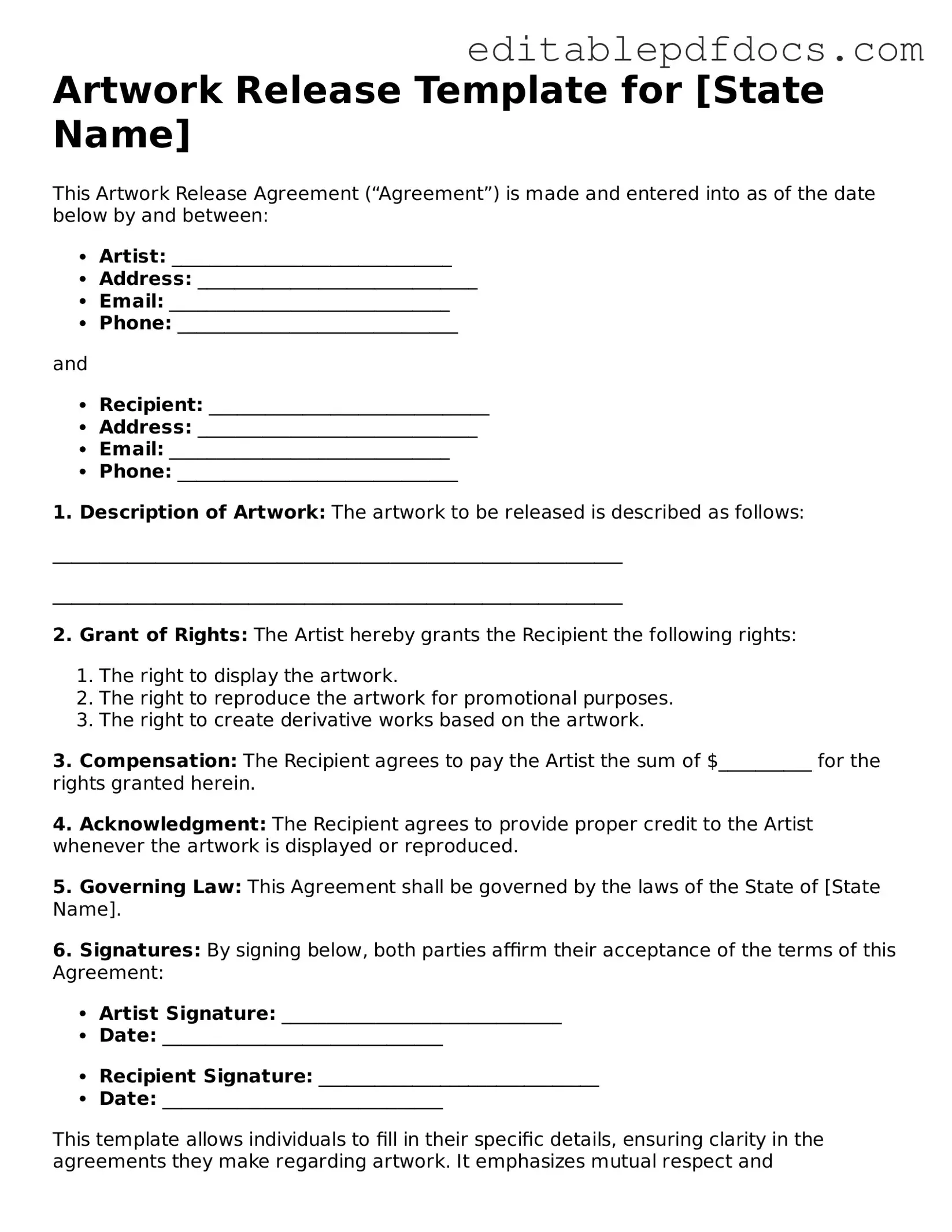Filling out an Artwork Release form is a crucial step for artists and creators. However, many individuals make common mistakes that can lead to complications down the line. Understanding these pitfalls can save time and prevent legal issues.
One frequent mistake is not providing complete information. Artists often forget to include their full name, contact information, or the title of the artwork. Incomplete forms can lead to confusion about ownership and rights.
Another common error is failing to specify the intended use of the artwork. Without clear details on how the artwork will be used, misunderstandings can arise. This can affect both the artist’s rights and the permissions granted.
People also often overlook the importance of signing and dating the form. A signature signifies agreement to the terms laid out in the release. Without it, the document may be considered invalid, leaving both parties vulnerable.
Some individuals mistakenly assume that verbal agreements are sufficient. Relying on a handshake or a casual conversation can lead to disputes. Written agreements are essential for clarity and protection.
Another error is not reading the entire form before signing. Important clauses may be hidden in the fine print. Failing to understand these can lead to unintended consequences regarding the use of the artwork.
People may also neglect to keep a copy of the signed form. This is a critical step. Without a copy, artists may find it challenging to prove their rights or the terms of the agreement later on.
Additionally, some forget to include any necessary additional documentation. If the artwork is part of a larger project or collaboration, relevant agreements should accompany the release form to avoid confusion.
Another mistake is not consulting with a legal professional when unsure about the terms. Legal advice can provide clarity and ensure that the release form aligns with the artist's intentions and rights.
Lastly, many individuals fail to update the form as circumstances change. If the use of the artwork evolves, it is essential to revisit and amend the release to reflect new agreements. Ignoring this can lead to disputes over usage rights.
